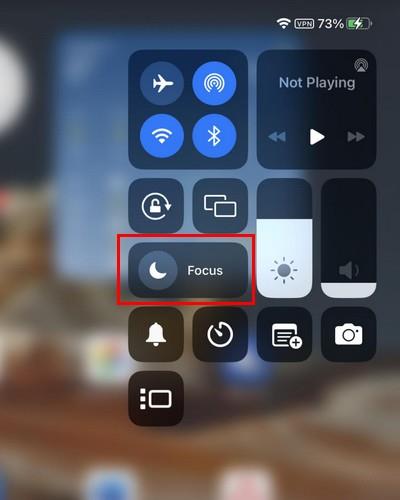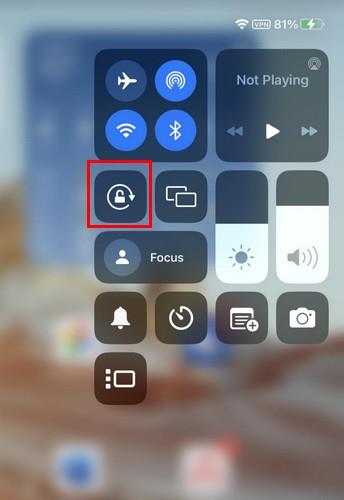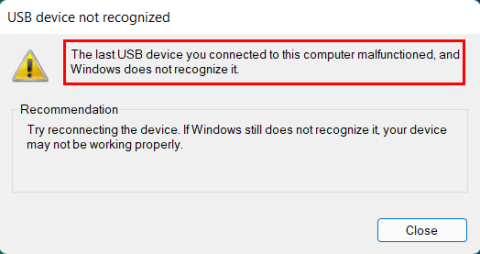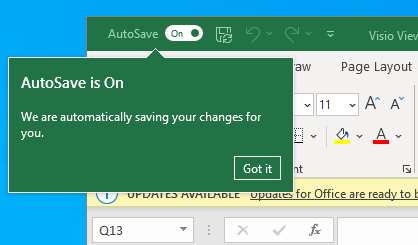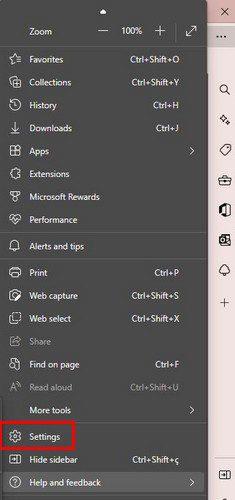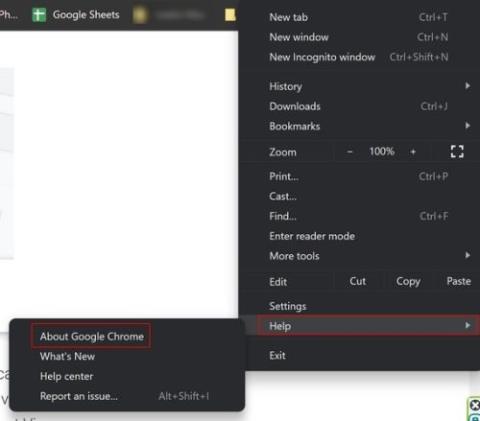Calquera servizo que estea dispoñible en liña ten o seu propio conxunto de problemas e Microsoft Teams non é unha excepción. A ferramenta de colaboración experimentou un crecemento significativo na súa base de usuarios no medio da pandemia de COVID-19 pero, ao mesmo tempo, tamén experimentou un puñado de problemas que poden afectar a súa experiencia de traballo remoto a diario.
Houbo varios informes de que Microsoft Teams non pode acceder ao audio do micrófono mentres está nunha videoconferencia. Se os participantes nunha reunión están lidando co "problema sen audio" en Microsoft Teams, a seguinte lista de correccións debería axudarche a resolver o teu problema.
Contidos
Solución n.º 1: reinicie o software, a PC e o teléfono de Teams
Pregúntalle a calquera como solucionar un problema no teu teléfono ou PC, a súa primeira resposta será suxerirche reiniciar ou reiniciar o dispositivo. Dado que os ordenadores e os teléfonos intelixentes modernos dependen da memoria RAM (Random Access Memory), cando reinicias o dispositivo, a memoria RAM bótase e, xunto con ela, toda a caché e rexistros temporais que se estaban xerando en segundo plano. Así, cando se reinicia un ordenador ou un teléfono intelixente, os problemas máis comúns resólvense ou comezan sen problemas significativos.
Podes reiniciar os teus dispositivos seguindo os métodos relevantes para ti.
Windows : vai ao botón Inicio, selecciona o botón Acendido e fai clic en "Reiniciar".
Mac : fai clic na icona de Apple na esquina superior esquerda e selecciona a opción "Reiniciar" e despois fai clic de novo en "Reiniciar".
Android : manteña premido o botón de acendido do teu dispositivo Android e toca "Reiniciar".
iOS : manteña premido o botón lateral (e calquera botón de volume no iPhone X, XR, Xs, XS Max, 11, 11 Pro, 11 Pro Max) ata que apareza o control deslizante de apagado e, a continuación, arrastre o control deslizante cara á dereita para reiniciar .
Solución n.º 2: actualice o cliente de escritorio de Microsoft Teams
Calquera aplicación que poidas instalar no teu ordenador ou teléfono intelixente pode sufrir unha función rota debido a unha actualización de software recente. Así, os desenvolvedores de aplicacións populares tenden a publicar actualizacións con máis frecuencia, para corrixir erros e fallos que poidan estar experimentando os usuarios. Por iso, recoméndase que manteñas a túa aplicación Teams actualizada en calquera momento.
Podes comprobar e actualizar a aplicación Microsoft Teams no teu ordenador facendo clic na túa imaxe de perfil e seleccionando a opción "Buscar actualizacións".
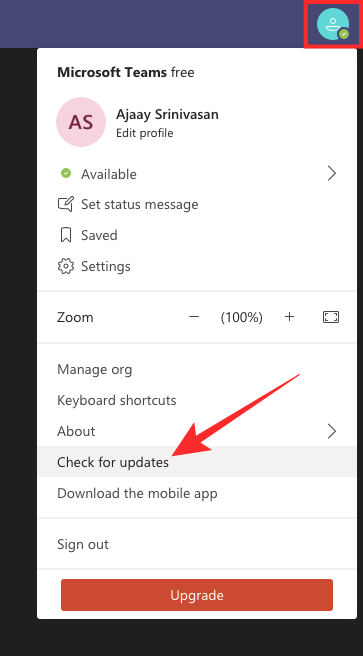 Solución n.º 3: comproba se estás silenciado e, se si, desactiva o silencio
Solución n.º 3: comproba se estás silenciado e, se si, desactiva o silencio
É unha solución sinxela, pero é o primeiro que debes ter en conta. Dentro dunha reunión de Teams, comproba se o micrófono está desactivado. Se é o caso, é posible que o organizador da reunión o silenciase ou que se silenciase accidentalmente.
Nunha reunión do equipo, podes comprobar por ti mesmo se te silenciaron se o botón do micrófono se tocou en diagonal cunha liña.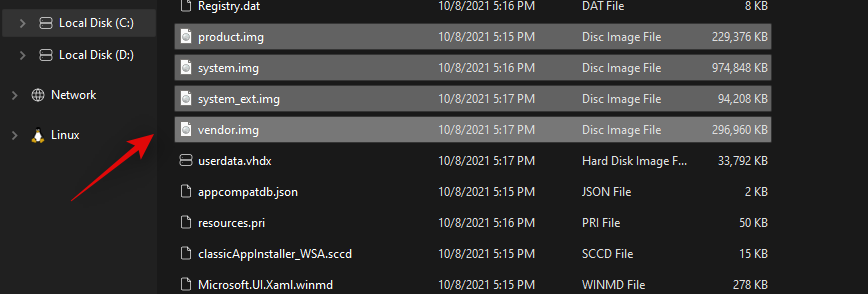
Silenciado en Teams
Para activar o silencio, fai clic na icona do micrófono que agora debería estar desactivada e agora deberías poder falar durante unha reunión.

Solución n.º 4: comprobe se o organizador da reunión silenciou a todos
Microsoft comezou recentemente a lanzar unha función de "Silenciar duro" que permite aos organizadores da reunión desactivar os controis do micrófono para todos os participantes na reunión. Isto é útil para as aulas e reunións con un gran número de persoas que, doutro xeito, serán máis difíciles de controlar polo anfitrión sen a función.
Se os demais non escoitan a túa voz cando estás a falar durante unha reunión, o silenciou o anfitrión da reunión ou a todos os participantes presentes. Cando o organizador o silencie, a opción de activar o silencio quedará desactivada ata que o organizador che converta en presentador.
Solución n.º 5: verifica se o micrófono do teu dispositivo non está fisicamente silenciado
Se o teu micrófono non está silenciado na aplicación Teams, comproba se o micrófono do teu dispositivo non está silenciado. Algúns teclados teñen un botón de silencio dedicado que bloquea o audio tanto nos altofalantes como no micrófono. Polo tanto, debes asegurarte de que o teu audio non estea fisicamente silenciado e, se está silenciado, preme de novo a tecla para activalo.
Ademais dos teclados, algúns dispositivos de son, como auriculares con micrófono, teñen interruptores nativos para silenciar/activar o micrófono. Comproba se o teu audio funciona usando un interruptor para activar o silencio dos auriculares.
Solución n.º 6: fai unha chamada de proba en Microsoft Teams
Hai unha ferramenta xenial proporcionada por Microsoft que che permite probar o micrófono e os altofalantes desde o cliente de escritorio de Teams. Podes facer unha chamada de proba en Teams facendo clic na túa foto de perfil en Teams e indo a Configuración > Dispositivos. Na seguinte pantalla, fai clic na opción "Facer unha chamada de proba" en Dispositivos de audio.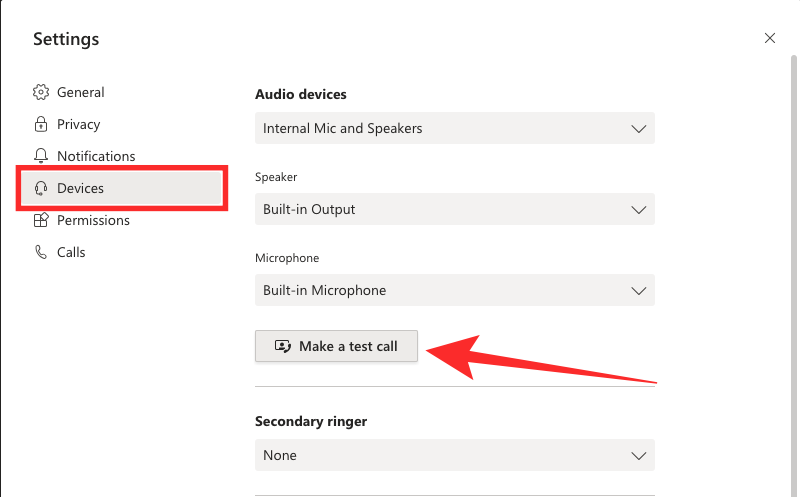
Cando comece a chamada de proba, comproba se os teus altofalantes producen algún son e se a aplicación Teams é capaz de detectar son a través do micrófono.
Solución #7: asegúrate de que o teu dispositivo de audio estea seleccionado
É posible que teñas máis dun dispositivo de audio conectado ao teu sistema. Polo tanto, é probable que a aplicación Teams non seleccione automaticamente o dispositivo de audio principal que pode querer usar durante as reunións. Para cambiar o teu dispositivo de audio en Teams, fai clic na icona de 3 puntos (Máis opcións) dos controis da reunión na parte inferior e selecciona "Mostrar a configuración do dispositivo".
Na sección Dispositivos de audio, selecciona o teu dispositivo de audio principal no menú despregable. Tamén podes configurar a túa configuración de audio seleccionando individualmente os teus dispositivos "Altofalante" e "Micrófono" preferidos. Comproba se agora podes falar durante unha reunión e se outras persoas escoitan a túa voz.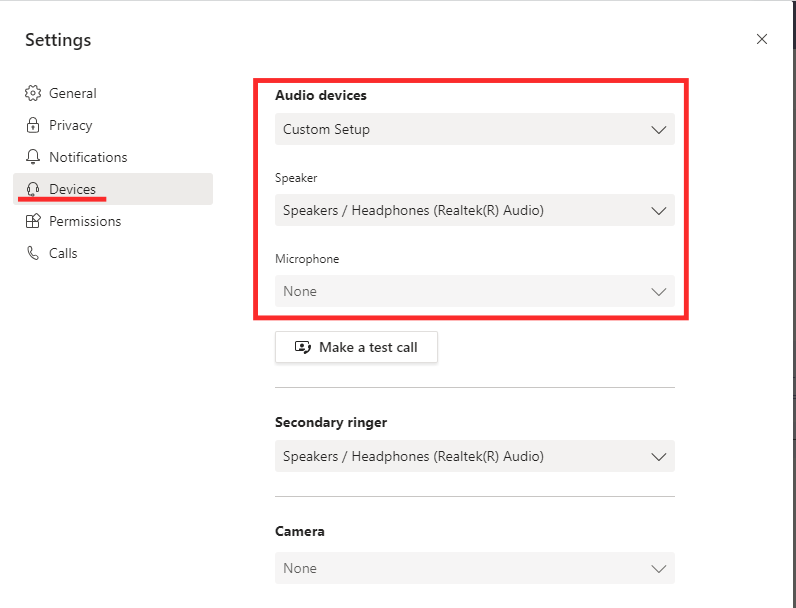
Se non estás nunha reunión, podes seleccionar os teus dispositivos de audio facendo clic na imaxe do teu perfil de Teams na esquina superior dereita, dirixíndote a Configuración > Dispositivos e seleccionando o dispositivo que queres usar como altofalante e micrófono principal. .
Solución n.º 8: Permitir permisos multimedia dentro da aplicación Teams
Microsoft Teams ofrece un conxunto de permisos que solicita do teu ordenador. Estes permisos inclúen medios, localización, notificacións, ligazóns externas e dispositivos MIDI. Podes comprobar se a aplicación Teams recibiu permisos multimedia desde a pantalla Configuración de Teams.
Para facelo, fai clic na imaxe do teu perfil de Teams na esquina superior dereita, diríxete a Configuración > Permisos e asegúrate de que o interruptor adxacente a "Multimedia (cámara, micrófono, altofalantes)" estea activado.
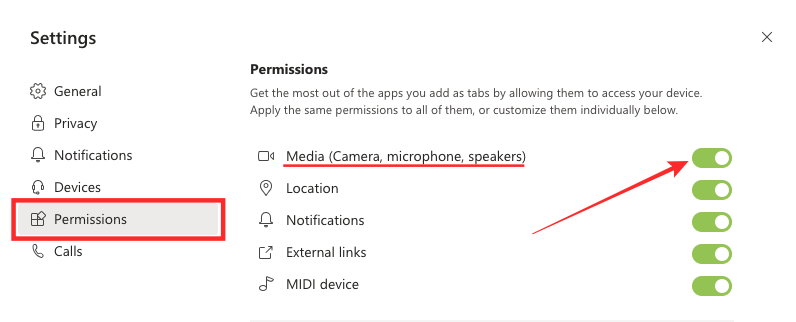
Solución #9: cambia a un micrófono/altofalante alternativo
If you have multiple speakers and microphones connected to your computer at once, then you will have to manually select the device you want to use for Teams by yourself. You can also try switching between these devices to check whether the issue persists because of hardware or a software bug inside the Teams app.
You can choose the audio device you want to use by clicking on your Teams profile picture on the top right corner, heading over to Settings > Devices, and selecting your preferred device under the different sections: Audio devices, Speaker, and Microphone. 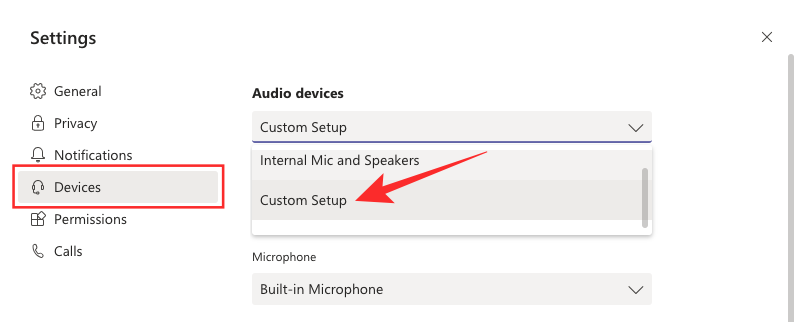
Solution #10: Test your microphone on Windows 10
If you are almost certain that the audio issue is regarding your microphone and not the Teams app, you can confirm by testing your microphone in Windows 10. To do this, click on the Start button, head over to Settings > System > Sound. Inside the ‘Input’ tab, make sure that your microphone is selected under ‘Choose your input device’.
You can test the selected microphone by clicking the ‘Test your microphone’ button and verify whether Windows is able to hear from you. 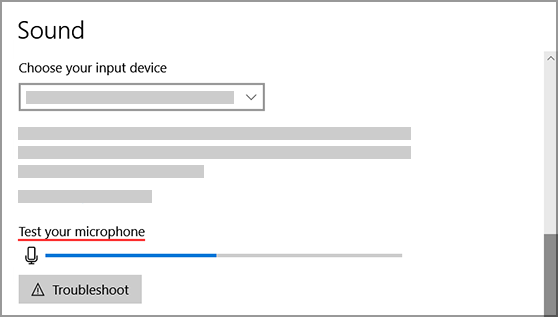
Solution #11: Adjust Microphone and Microphone Boost levels inside Windows 10
If you think your microphone is functioning but others aren’t able to hear you clearly, you can adjust your microphone levels on Windows 10. You can adjust the Microphone and Microphone Boost levels by clicking on ‘Start’, and going to Settings > System > Sound. Make sure that your preferred microphone is selected under the ‘Choose your input device’ section inside the ‘Input’ tab. After this, click on ‘Device Properties’.
Now, head over to the ‘Levels’ tab inside Microphone Properties, and adjust the sliders adjacent to ‘Microphone’, and ‘Microphone Boost’.
Solution #12: Check for audio incompatibility with Teams app
Microsoft has confirmed that Teams will only work with the Microsoft certificated audio devices. If the above solutions do not work, then there’s a likelihood that you’re using an audio device that’s incompatible with the Teams app on your system. You can check if your audio device is eligible to be used with Microsoft Teams from the links below.
Teams Compatible Audio devices: List 1 | List 2
Solution #13: Allow microphone access to Teams inside Windows settings
In Windows 10, apps and services need your permission to control some elements of your system like the use of your camera or microphone. This is present so as to protect users from unknown apps and malware that could take advantage of these access points for their own benefit.
If your audio isn’t working, then it might be because the Teams app hasn’t been able to use your computer’s microphone. To enable microphone access for Teams on Windows, click on the Start Menu and head over to Settings > Privacy > Microphone. Inside this screen, make sure that the ‘Allow desktop apps to access your microphone’ option is turned ON.
In addition to that, you should also double-check if you have enabled microphone access to the Teams app under the ‘Choose which apps can access your microphone’ section. If you’re using Teams on the web, make sure the web browser that you use Teams on has access to your microphone as well under this section.
Solution #14: Change the default Recording device on Windows
If your audio device still isn’t working, a user “LiamWard” on the Microsoft Answers page suggests a solution that seems to work for a similar problem on Skype. You can use Windows 10’s native ‘Recording devices’ feature to select your default Recording device for all the apps on your computer.
You can do so by right-clicking on the speaker icon in the notification area (on the taskbar) and selecting ‘Recording devices’ from the menu. From here, check if your audio input is selected for default recording purposes. To set a microphone device for default recording, right-click on it and select the ‘Set as Default Communication Device’. If this option doesn’t work for you, you can select “Microphone Array (Realtek High Definition Audio(SST))” as the default Recording device.
Depending on what you chose as the default Recording device, selecting this device as your default audio option inside the Teams app, as listed on Solution #3 from above.
Solution #15: Change your Mac’s privacy settings
Recent versions of macOS allow you control over which apps and websites can use the microphone in order to capture or record audio. If your Teams app isn’t able to grab your audio from the inbuilt microphone or any other device when using a Mac, then you might not have allowed the app access to your microphone inside Mac’s privacy settings.
To give access to your microphone on a Mac, click on the Apple icon on the top left corner, select System Preferences, and head over to Security & Privacy > Privacy. On this screen, select the ‘Microphone’ option from the left sidebar and check the tickbox next to Microsoft Teams to allow it to access the microphone.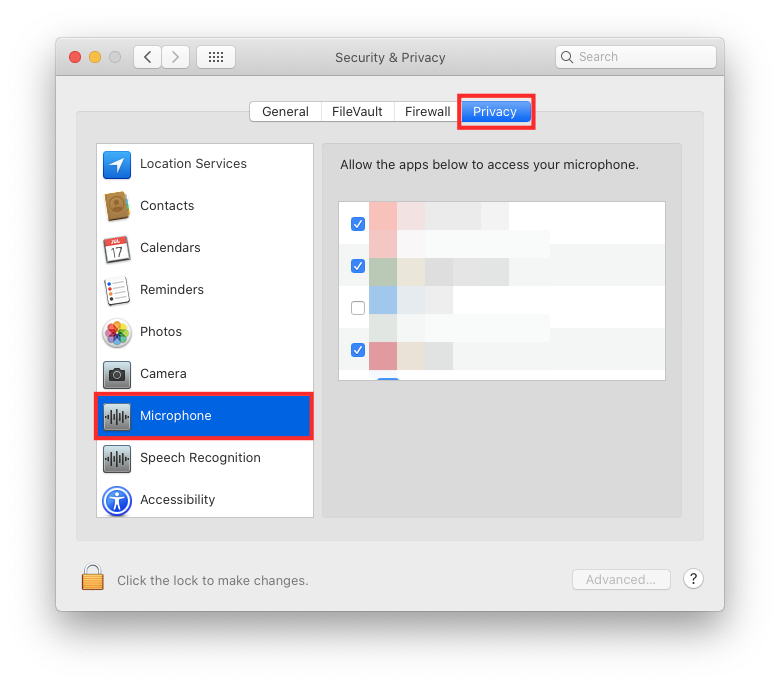
Solution #16: Check whether your problem persists with Teams on the web
If none of the above solutions work and you’re using the Teams using a desktop client on your Windows or Mac commuters then you might want to use Microsoft Teams on the web. The web client of Teams is not only an alternative to its desktop counterpart but also a fully-functional one with support for video calling, screen sharing, and more.
You can use the Teams on the web by going to “https://teams.microsoft.com” and signing in with your account credentials. At the time of the writing, only Microsoft Edge (Chromium-based) and Google Chrome have full support for Teams while some features are missing on Safari and Mozilla Firefox. Here’s a full list of browsers Teams will work on.
When using a browser to sign in to Teams, you also need to make sure that the selected browser has been allowed microphone access. Take a look at Solution #5 and Solution #7 to give microphone access to your browser on Windows and Mac respectively.
Solution #17: Create a new Windows user profile
In a Microsoft community post, it has been reported that deleting a local Windows profile and creating a new one to use Teams no longer gets you the ‘audio not working’ error. The suggestion was posted by a Microsoft Agent and has been confirmed to work for some users.
To delete a local Windows 10 profile, click on the Start menu and head over to Settings > Accounts > Family & other users. Here, select the profile you want to delete and hit ‘Remove’.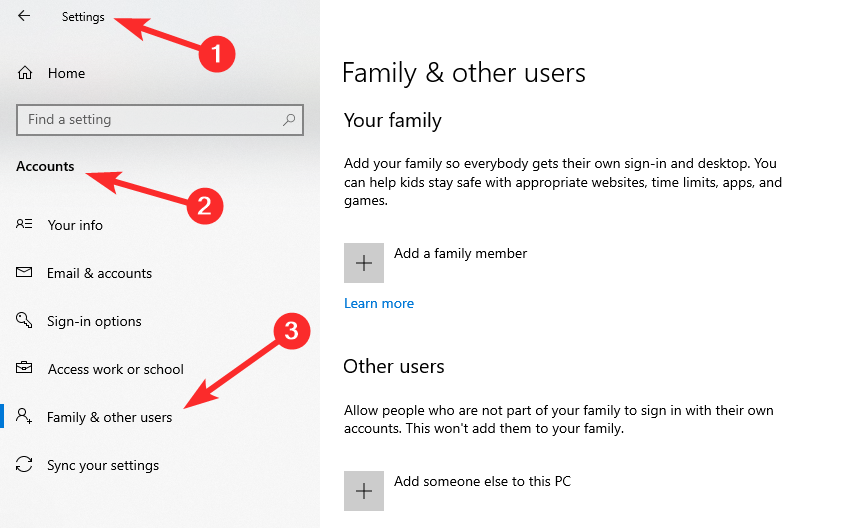
Now create a new profile from within the same screen by clicking on the ‘Add someone else to this PC’ option under the ‘Other people’ section. You can either create the profile using a Microsoft Account or without one. Using this profile, try to use the Teams app and check whether your audio is now working.
Solution #18: Update drivers for your audio device inside Device Manager [Windows 10]
Windows continuously provides updates for the drivers of all devices connected to your computer. It’s thus important that you keep the drivers updated to their latest versions and keep them working properly.
You can easily update or reinstall your device drivers on Windows 10 by launching the Device Manager. In the Device Manager window, double-click on the ‘Audio Inputs and outputs’ option, and a list of audio devices available on your system will appear on your screen. Here, right-click on your microphone device, select ‘Properties’, and then click on the ‘Update Driver’ button under the ‘Driver’ tab. 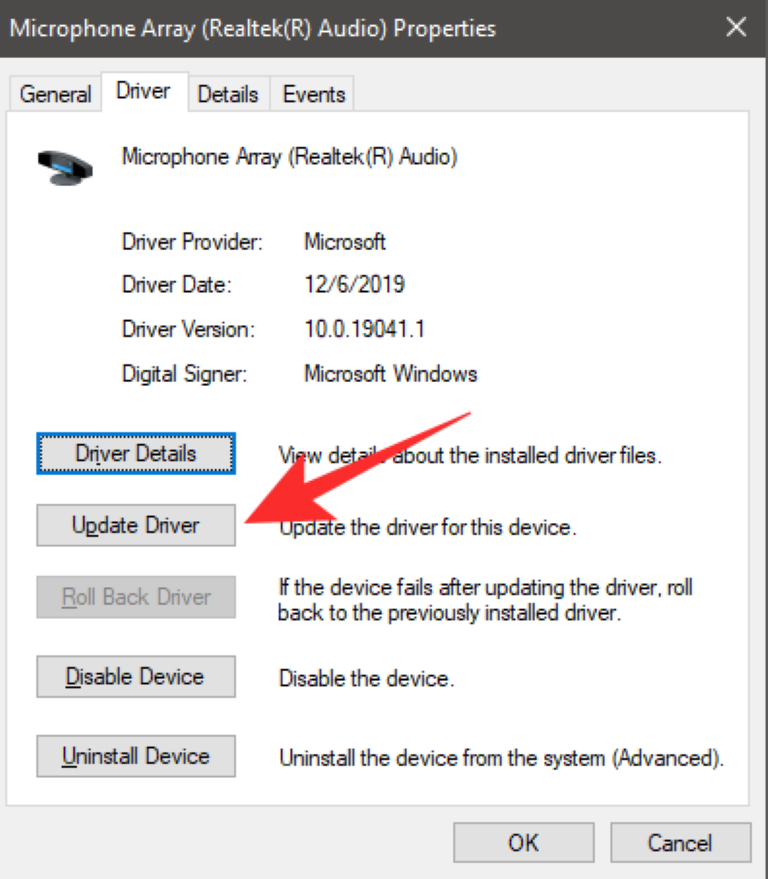
Solution #19: Delete all sound devices on Windows
A user posted on the Microsoft Telecommunity that deleting all audio devices on Windows solves the audio not working problem when using Teams. To do this, open the Control Panel on your Windows PC and head over to Hardware and Sound > Device Manager. Right-click on all the sound devices and click Uninstall.
Do this for all the audio devices listed under Device Manager, and then restart your computer. Windows will now scan for hardware changes and only install drivers for currently active components. Restart your computer to apply the changes and check if audio is working inside the Teams app.
Solution #20: Fix your microphone with these solutions
Are you experiencing microphone sensitivity issues inside Microsoft Teams where the volume level of the mic adjusts automatically during a call? If yes, then we have prepared a dedicated post in the link below which you can refer to fix the problem.
▶ How to Fix Microphone Volume Issue on Microsoft Teams
Were you able to successfully fix audio issues on Microsoft Teams?
RELATED

 Solución n.º 3: comproba se estás silenciado e, se si, desactiva o silencio
Solución n.º 3: comproba se estás silenciado e, se si, desactiva o silencio










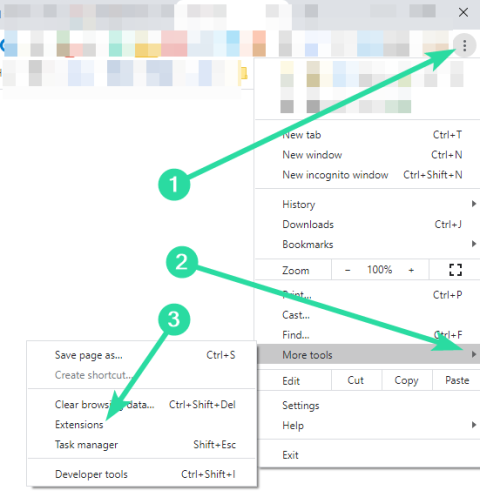

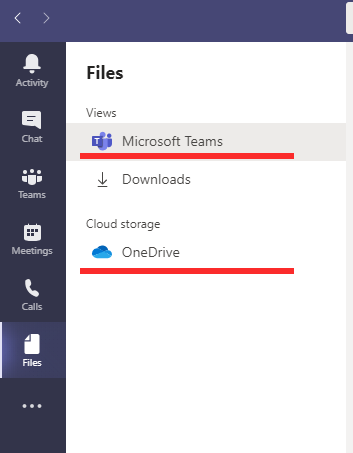






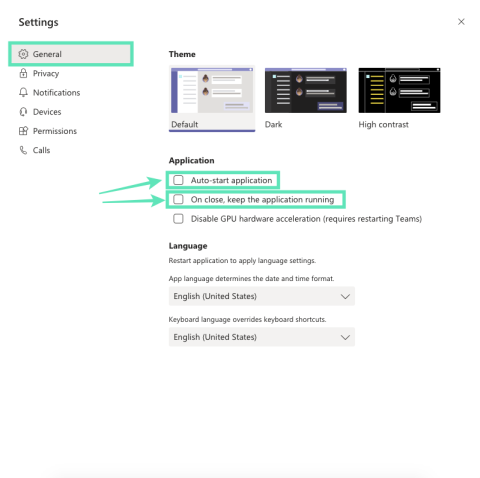
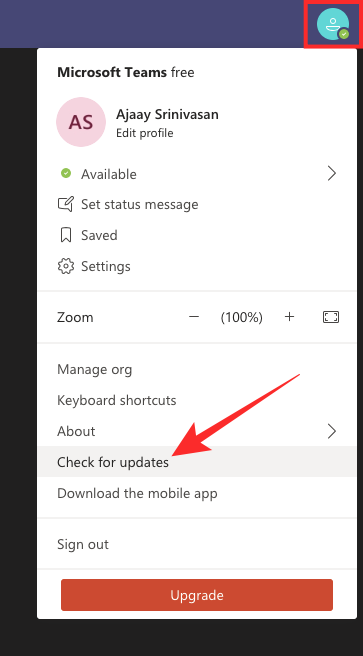




![Como corrixir o erro da pantalla verde de Windows 11 [8 xeitos] Como corrixir o erro da pantalla verde de Windows 11 [8 xeitos]](https://blog.webtech360.com/resources8/images31/image-5564-0105182715287.png)
![[Actualización: 8 de novembro] A ferramenta de recorte non funciona en Windows 11? Como solucionar problemas de erro ou atallos de Esta aplicación non se pode abrir. [Actualización: 8 de novembro] A ferramenta de recorte non funciona en Windows 11? Como solucionar problemas de erro ou atallos de Esta aplicación non se pode abrir.](https://blog.webtech360.com/resources8/images31/image-6552-0105182756436.jpg)


